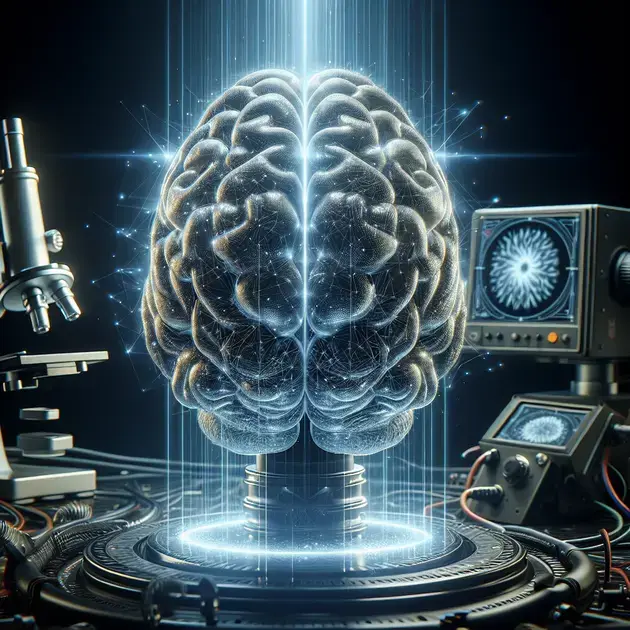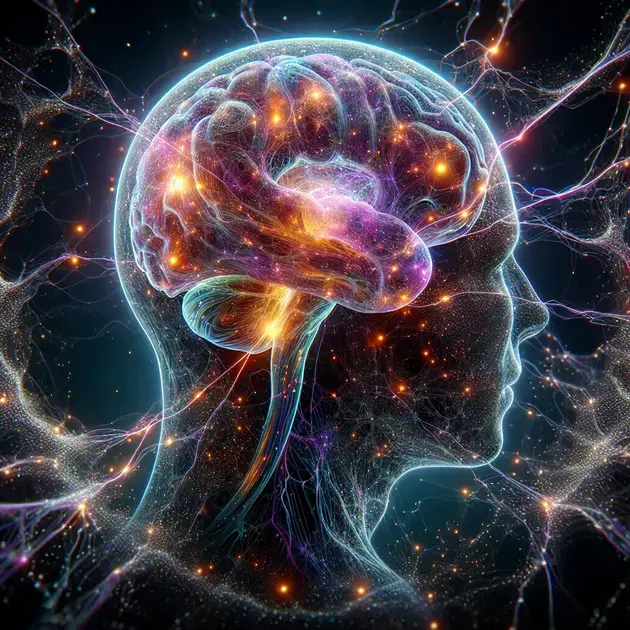With “Brain Power: Exploring the Fascinating World of Neuro Sciences,” we dive into the intricate realm of neuroscience that continues to captivate researchers and enthusiasts alike. The study of the brain, its functions, and the connections between behavior and neural processes unveils a universe of remarkable discoveries and ongoing mysteries.
Recent advancements in neuroimaging technologies have revolutionized the way we explore the complexities of the brain. From functional magnetic resonance imaging (fMRI) to electroencephalography (EEG), these tools provide unprecedented insights into the inner workings of our most complex organ.
Unveiling the Secrets of the Brain: A Comprehensive Overview
The human brain is one of the most complex and fascinating organs in the body, responsible for governing our thoughts, emotions, and behaviors. Understanding the intricacies of the brain is crucial for advancements in neuroscience and psychology. To delve into the secrets of the brain, one can start by exploring educational platforms such as Coursera, which offers courses on neuroscience and brain function. These online courses provide a comprehensive overview of the brain’s structure, functions, and the latest research findings.
Furthermore, reading scientific journals like Nature Neuroscience and Frontiers in Human Neuroscience can provide in-depth insights into cutting-edge research in the field. These publications often feature studies on brain imaging techniques, neural processes, and the relationship between brain activity and behavior. By staying updated on the latest discoveries, individuals can gain a deeper understanding of the brain’s mysteries.
Another valuable resource for exploring the brain is the Human Connectome Project website. This project aims to map the neural pathways and connections in the brain, offering detailed interactive maps that showcase the complexity of neural networks. By navigating through these visualizations and educational resources, individuals can unravel the intricate workings of the brain.
Engaging in brain-training apps such as Lumosity and Elevate can also be beneficial for gaining insights into cognitive processes and brain functioning. These apps offer various games and exercises designed to challenge different aspects of cognition, providing users with a fun and interactive way to enhance their brain skills. By participating in these activities, individuals can sharpen their mental abilities and expand their knowledge of brain functioning.
By leveraging these resources and tools, individuals can embark on a journey to unveil the secrets of the brain, gaining a comprehensive overview of its complexities and mysteries.
The Evolution of Neuroimaging Techniques in Neuroscience
Neuroimaging techniques have revolutionized the field of neuroscience, allowing researchers to visualize and study the brain’s structure and function in unprecedented detail. The evolution of neuroimaging has been marked by significant advancements in technologies such as magnetic resonance imaging (MRI), positron emission tomography (PET), and functional magnetic resonance imaging (fMRI).
To understand the evolution of neuroimaging techniques, one can explore the history and development of these technologies on websites like the National Institute of Mental Health (NIMH) and the Society for Neuroscience. These platforms provide detailed timelines and information on the key milestones in neuroimaging, highlighting the breakthroughs that have shaped the field.
Furthermore, attending conferences and workshops on neuroimaging can offer valuable insights into the latest trends and innovations in the field. Events like the Annual Meeting of the Organization for Human Brain Mapping showcase cutting-edge research on brain imaging techniques and their applications in neuroscience. By participating in these gatherings, individuals can gain a deeper appreciation for the advancements that have driven the evolution of neuroimaging.
Exploring academic journals such as NeuroImage and Journal of Neuroimaging can also provide in-depth analyses of the latest neuroimaging studies and technologies. These publications feature articles on novel imaging methods, data analysis techniques, and the integration of neuroimaging with other disciplines like psychology and psychiatry. By studying these findings, individuals can stay informed about the rapidly evolving landscape of neuroimaging.
By tracing the evolution of neuroimaging techniques and staying informed about the latest developments in the field, individuals can appreciate the transformative impact of these technologies on neuroscience and our understanding of the brain.
Decoding the Brain: Understanding the Connection Between Behavior and Neural Processes
The intricate relationship between behavior and neural processes lies at the heart of neuroscience and psychology, offering insights into how our actions and thoughts are influenced by brain activity. Decoding this connection requires a multifaceted approach that integrates knowledge from cognitive science, neurobiology, and behavioral psychology.
One way to understand the link between behavior and neural processes is through cognitive neuroscience research studies that investigate how specific brain regions are involved in various behaviors. Websites like ScienceDirect and PubMed offer access to a wealth of research articles and studies that explore the neural basis of behavior, decision-making, and emotion. By reviewing these publications, individuals can gain a deeper understanding of the brain mechanisms underlying different behaviors.
Engaging in neurofeedback training programs, such as Muse and Neuroptimal, can also provide insights into the connection between brain activity and behavior. These programs utilize EEG technology to monitor brain waves and provide real-time feedback to users, allowing them to modulate their neural processes and enhance behaviors like focus and relaxation. By participating in neurofeedback sessions, individuals can experience firsthand the impact of brain activity on behavior.
Additionally, virtual reality (VR) platforms like the Stanford Virtual Human Interaction Lab offer immersive experiences that simulate real-world scenarios to study behavior and neural responses. By exploring these VR environments, researchers can observe how the brain reacts to different stimuli and situations, shedding light on the neural processes that underlie behavior. Virtual reality technology serves as a powerful tool for decoding the complexities of human behavior.
By combining insights from cognitive neuroscience research, neurofeedback training, and virtual reality simulations, individuals can gain a deeper understanding of the intricate connection between behavior and neural processes, unraveling the mysteries of the human brain.
Exploring the Wonders of Cognitive Psychology
Cognitive psychology is a fascinating field that delves into the inner workings of the human mind. It seeks to understand how we think, learn, and remember. One of the key areas of focus in cognitive psychology is memory, which plays a crucial role in our daily lives. Researchers in this field explore various aspects of memory, such as how it is formed, stored, and retrieved.
Understanding cognitive psychology can provide valuable insights into human behavior and decision-making processes. By studying cognitive processes, researchers can gain a better understanding of how we perceive the world around us and make sense of complex information. This knowledge can be applied to various real-world scenarios, such as improving learning techniques, enhancing memory, and optimizing cognitive performance.
Researchers in cognitive psychology also investigate attention, perception, language, and problem-solving, among other cognitive processes. By exploring these different aspects of cognition, scientists can uncover the mechanisms that underlie human intelligence and behavior. Cognitive psychology plays a vital role in fields such as education, artificial intelligence, and human-computer interaction.
In conclusion, exploring the wonders of cognitive psychology offers a fascinating journey into the complexities of the human mind. By unraveling the mysteries of cognition, researchers can unlock valuable insights that have the potential to shape the future of various domains, from education to technology.
The Impact of Technology on Brain Research
Advancements in technology have revolutionized the field of brain research, enabling scientists to delve deeper into the complexities of the human brain. One significant impact of technology on brain research is the development of advanced imaging techniques, such as fMRI and EEG, which allow researchers to observe brain activity in real-time.
These imaging technologies have provided invaluable insights into brain function, helping researchers map neural pathways, study cognitive processes, and investigate neurological disorders. The ability to visualize brain activity non-invasively has transformed our understanding of the brain and opened up new possibilities for research and treatment.
Furthermore, technology has facilitated the collection and analysis of large-scale data sets, enabling researchers to conduct complex studies on brain structure and function. Machine learning algorithms and computational models have also enhanced our ability to process and interpret brain data, leading to groundbreaking discoveries in neuroscience.
Overall, the impact of technology on brain research has been profound, propelling the field forward and enabling researchers to explore the intricate workings of the brain in unprecedented detail. As technology continues to advance, the future of brain research holds immense promise for further unraveling the mysteries of the mind and developing innovative approaches for improving brain health.
Neuroplasticity: The Brain’s Amazing Ability to Change
Neuroplasticity, also known as brain plasticity, refers to the brain’s remarkable capacity to reorganize itself and adapt to new challenges. This incredible ability allows the brain to form new neural connections, rewire existing pathways, and recover from injury or trauma. Neuroplasticity plays a crucial role in learning, memory, and recovery from neurological conditions.
Research in neuroplasticity has shown that the brain is highly adaptable and constantly reshaping itself in response to experiences and environmental stimuli. Through practice, learning, and exposure to new information, the brain can undergo structural and functional changes that enhance its performance and cognitive abilities.
Studies have demonstrated the remarkable plasticity of the brain across the lifespan, showing that it is never too late to learn new skills or develop new cognitive abilities. This inherent flexibility of the brain offers hope for individuals recovering from stroke, brain injuries, or neurodegenerative diseases, as it highlights the brain’s capacity for regeneration and rehabilitation.
By understanding and harnessing the power of neuroplasticity, researchers and clinicians can develop innovative interventions and therapies to improve brain function and enhance overall cognitive health. The brain’s amazing ability to change underscores the importance of lifelong learning, mental stimulation, and healthy lifestyle choices in promoting brain plasticity and resilience.
Conclusion
In conclusion, delving into the wonders of cognitive psychology unveils the intricate workings of the human mind, focusing on essential aspects like memory formation, storage, and retrieval. This field offers profound insights into human behavior, decision-making processes, and the perception of complex information. Cognitive psychology’s impact extends across real-world applications, enhancing learning techniques, memory retention, and overall cognitive performance in various domains such as education and technology.
The influence of technology on brain research has been transformative, leveraging advanced imaging technologies like fMRI and EEG to observe brain activity in real-time. These innovations have revolutionized our understanding of brain function, enabling researchers to map neural pathways, study cognition, and explore neurological disorders. Through large-scale data analysis and computational models, technology has paved the way for groundbreaking discoveries in neuroscience, propelling brain research forward with immense potential for further insights and advancements in brain health.
Neuroplasticity, the brain’s extraordinary ability to adapt and reorganize, underlines its capacity for forming new connections, rewiring pathways, and recovering from damage. Research in neuroplasticity showcases the brain’s adaptability in response to experiences, emphasizing the importance of continuous learning, exposure to new information, and mental stimulation. This intrinsic flexibility offers hope for individuals recovering from various conditions, showcasing the brain’s potential for regeneration and rehabilitation. Harnessing the power of neuroplasticity opens doors for innovative interventions and therapies, promoting brain function, cognitive health, and emphasizing the significance of lifelong learning and healthy lifestyle choices in fostering brain plasticity and resilience.

